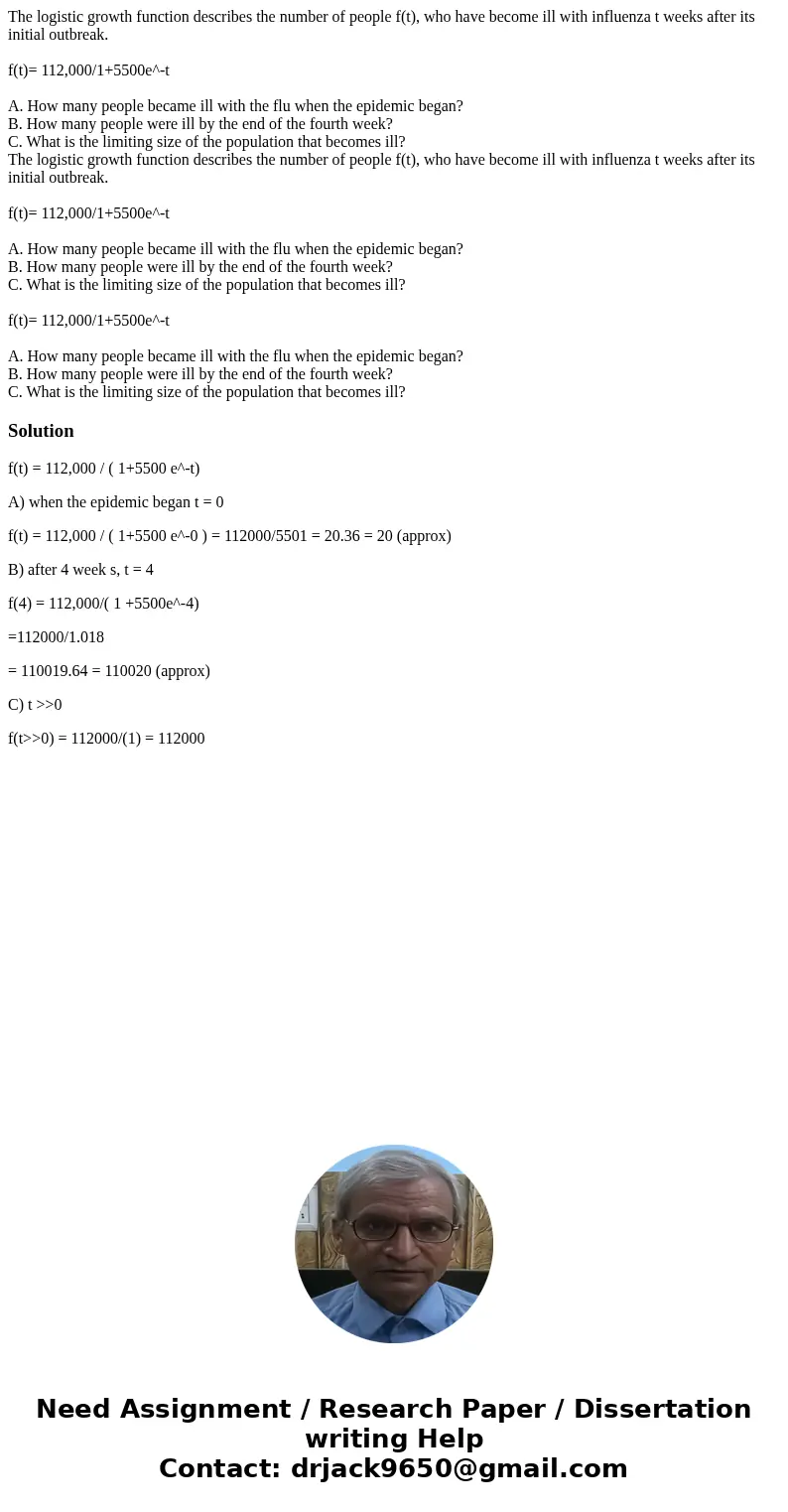The logistic growth function describes the number of people
The logistic growth function describes the number of people f(t), who have become ill with influenza t weeks after its initial outbreak.
f(t)= 112,000/1+5500e^-t
A. How many people became ill with the flu when the epidemic began?
B. How many people were ill by the end of the fourth week?
C. What is the limiting size of the population that becomes ill?
The logistic growth function describes the number of people f(t), who have become ill with influenza t weeks after its initial outbreak.
f(t)= 112,000/1+5500e^-t
A. How many people became ill with the flu when the epidemic began?
B. How many people were ill by the end of the fourth week?
C. What is the limiting size of the population that becomes ill?
f(t)= 112,000/1+5500e^-t
A. How many people became ill with the flu when the epidemic began?
B. How many people were ill by the end of the fourth week?
C. What is the limiting size of the population that becomes ill?
Solution
f(t) = 112,000 / ( 1+5500 e^-t)
A) when the epidemic began t = 0
f(t) = 112,000 / ( 1+5500 e^-0 ) = 112000/5501 = 20.36 = 20 (approx)
B) after 4 week s, t = 4
f(4) = 112,000/( 1 +5500e^-4)
=112000/1.018
= 110019.64 = 110020 (approx)
C) t >>0
f(t>>0) = 112000/(1) = 112000

 Homework Sourse
Homework Sourse